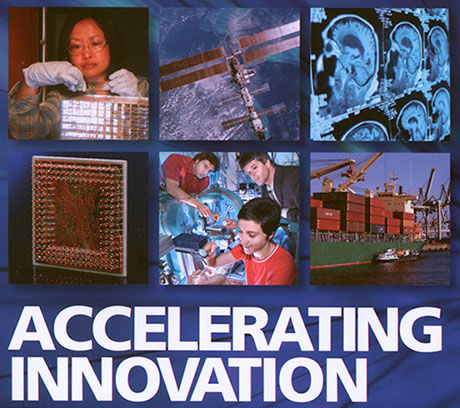As a child, you probably remember being fascinated by everyday things: that shiny rock you kicked or that weird looking beetle that you saw darting around a porch light. Kids typically have many questions for their parents: Why do roly-poly bugs wrap themselves up like a ball? Why do we get sunburned? Where does rain come from?
Of course, children think parents should know the answers. It’s often this child-like curiosity that drives scientists to ask basic questions about the world around us. Such as why do stars sometimes explode or why do people get cancer but elephants rarely do? Since we’re not going to get these answers from our parents, we have to turn to our instruments (or make new ones), and then go explore.
As a scientist with Thomas Jefferson National Accelerator Facility for more than two decades, I’ve been involved in helping to answer some of the basic questions about the material that makes up our universe. Like other scientists, I’m lucky to be able to take this basic science understanding and apply it to make everyday life better in so many ways. You’ll see what I mean if you read to the bottom.
FFRDCs: USA Does it Right!
I’m honored to be part of a unique partnership between government and the private sector. I’ve learned that few people understand how this partnership works and why it’s so powerful. Bear with me, and I’ll explain.
Jefferson Lab is part of a constellation of national labs, many of which are identified as Federally Funded Research and Development Centers (FFRDC). We can trace the origins of the Department of Energy and FFRDCs to the Manhattan Project and World War II. At the time, there were only three large research labs associated with the government. They were the National Bureau of Standards (now NIST), the National Institutes of Health and the Naval Research Laboratory. Most of the other scientists were associated with a few elite universities and were primarily supported by private benefactors. This was a huge problem because this system allowed for very few scientists and because the government had little influence to encourage scientists to work on problems of national security.
The following comes from the 1945 report from the Senate Committee on Military Affairs:“…the basic scientific discoveries on which most of the wartime scientific developments were based were made not by American but European scientists.” [1] This shows just how dependent the US was on the scientific advancements made by other countries.
A Partnership is Born
Congress created something that no other country has done. They formed uniquely American laboratories that were owned by taxpayers, run by the private sector and used by scientists and students from universities across the country. This allowed them to work on national science and technology priorities, which couldn’t be met by just government scientists or the private sector alone. This idea worked so well it propelled US science and innovation in the years after the war resulting in more of these powerful legislatively created partnerships. In fact, the National Science Foundation now lists a total of forty-two. (https://nsf.gov/statistics/ffrdclist/).
These labs are operated for several US government agencies such as the Department of Energy, the Department of Defense, the National Science Foundation, Department of Health and Human Serves and others. FFRDCs are defined by Congress to function in one of three ways - research and development laboratories, systems engineering and integration centers, and study and analysis centers.
Jefferson Lab is a research and development laboratory and has been tasked by the Department of Energy to build and operate a sophisticated particle accelerator that can be used by university researchers across the country and around the world to do fundamental research in nuclear physics. And here’s why that’s so important.
Making Life Better
Jefferson Lab’s nuclear particle accelerator and its sophisticated nuclear particle detectors provide the country with access to valuable expertise and instruments that government, industry or university labs could not provide alone. Jefferson Lab scientists, engineers and technicians draw on their child-like yearning to understand the world. This valuable knowledge can lead to new technologies that make American lives better and more secure. Physicists create new technologies to gain new understanding of the universe. This provides a double benefit. First, we have new knowledge that can open new horizons and second we have new technologies that perhaps can be used to help society. The basic understanding of the universe gained by seeking to probe the mysteries of the atomic nucleus using particle accelerators has led to such small life saving devices from smoke detectors to large medical centers that treat cancer.
I guarantee that everybody’s life has been touched by something that has come out of decades of particle accelerator research.
Stay tuned to be amazed!
Follow us on social media to learn more in our next Tech Tuesday installment.
Questions? Email: jlabinfo@jlab.org
Drew Weisenberger
Chief Technology Officer
Jefferson Lab
January 9, 2018
[1] March 15th 1945 report to the US Senate with regard to Senate Bill 1850: “A Bill to Promote the Progress of Science and Useful Arts, to Secure the National Defense, to Enhance the National Welfare, and for Other Purposes” (never passed)


